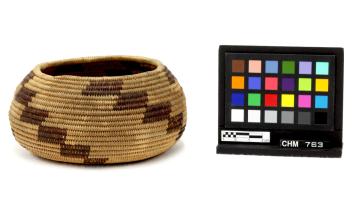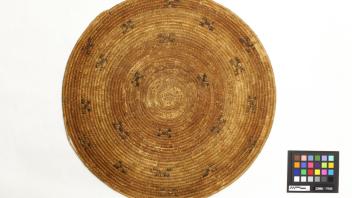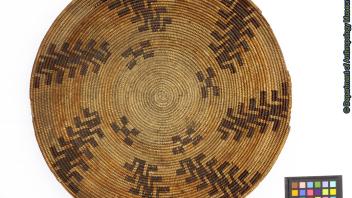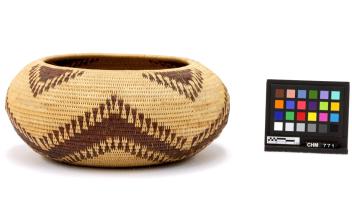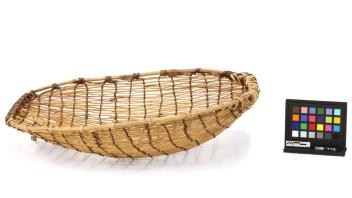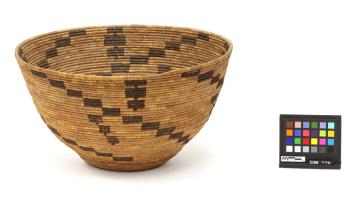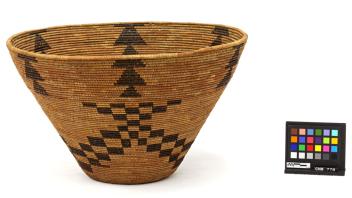Patwin Basketry
The word Patwin, meaning "people," was used by multiple tribelets to refer to themselves, and is generally used to describe the southernmost division of the Wintun language family on the basis of similarity in dialect and culture compared to the Nomlaki and Wintu. The Patwin occupied the lower portion of the Sacramento Valley, living in villages along the Sacramento River and its western tributaries as well on the lower Napa River and northern shores of the Sacramento Delta (see map).
Types of Patwin coiled basketry include cooking baskets, feast baskets, bowls, winnowing trays, feathered baskets, and oval baskets. Like other Central Californian coiling cultures, the Patwin traditionally coiled in a leftward work direction with foundations of peeled willow. Three-rod foundations were the most common in Patwin coiled baskets, although single-rod foundations were often used for winnowers and oval baskets. Tight-spiral starting knots were made by wrapping weft material around shredded foundation for an inch or so before adding the sturdy peeled shoots to the foundation. For most baskets, the Patwin coiled with an exterior work face, except for winnowing trays, done with an interior work face. Weft stitching could be done interlocking, non-interlocking, and with split-stitching, sometimes varying on a single basket. Concealed fag ends and concealed or bound-under moving ends are most common among Patwin basketry. To finish the basket, the Patwin used thick plain-wrapped rims and tapered coil endings, sometimes with backstiching. Warp material was primarily peeled willow shoot. Wefts primarily consisted of sedge root (light colored background), redbud (red or darkened red design), and dyed bulrush root (black designs). Feathers, clamshell disc beads, abalone pendents, and trade beads were sometimes used to decorate Patwin basketry as well.
Patwin twining includes close-work mortar hoppers and conical burden baskets as well as open-work baby cradles, seedbeaters, fishing traps, scoop trays, and winnowers. Plain twining over one warp, though occasionally over two warps, as well as diagonal twining are the main twining techniques represented. Lattice twining was used specifically for reinforcing mortar hoppers. An up-to-the-left slant of weft twist was most common. Warps were trimmed above the last weft row, though the rims of utilitarian baskets were often reinforced with thick vertical stitching of redbud or wild grape bark. Warps were made from willow and wefts from sedge root, conifer root, and redbud. Soft cordage-warped tule basketry was also made among the southern Patwin.





